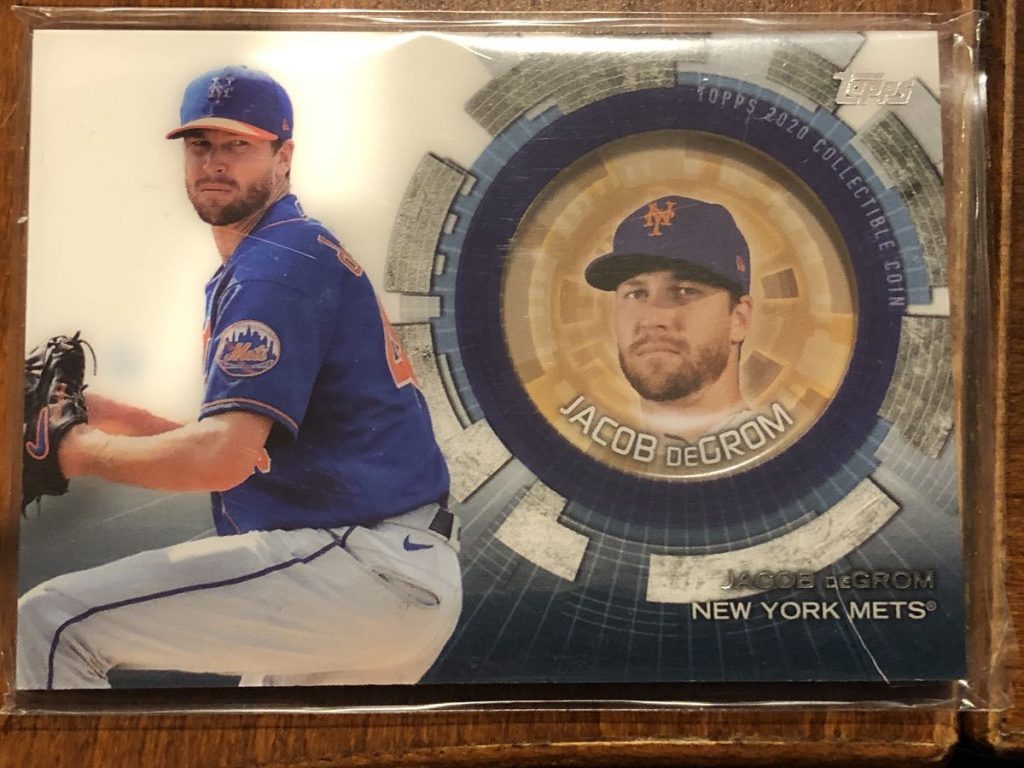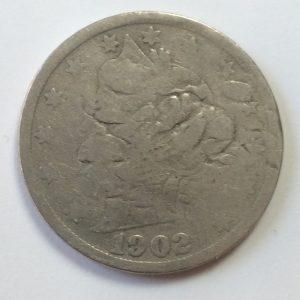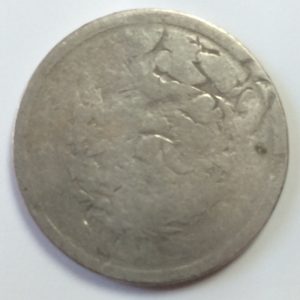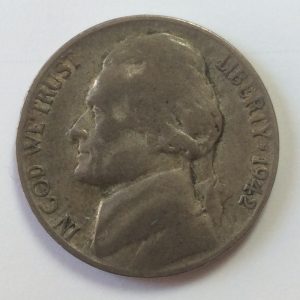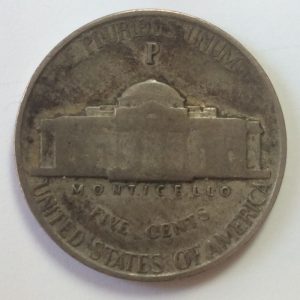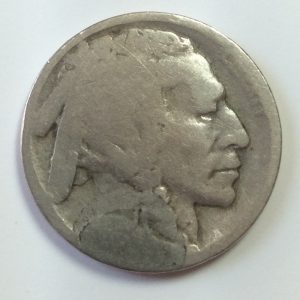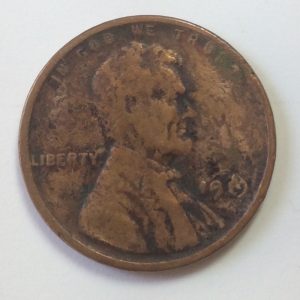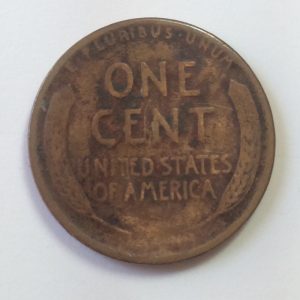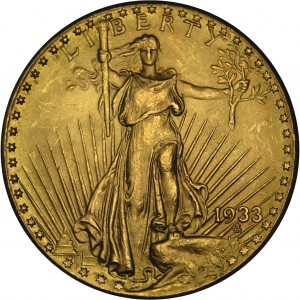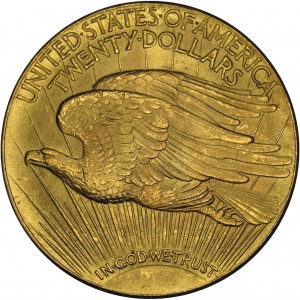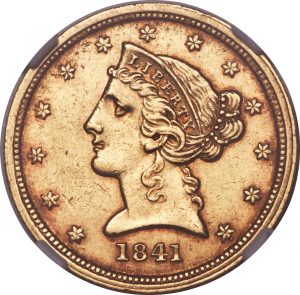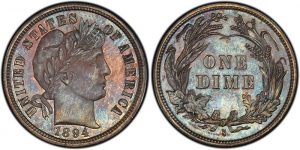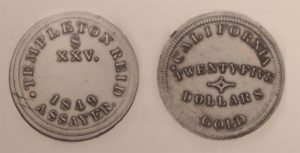Let’s Have a CoinCon
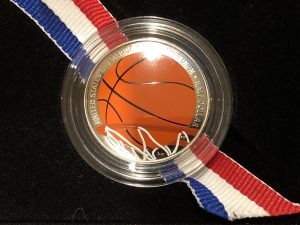 The evolution of coin collecting is here. It is all around you, and if you are collecting using blue and brown folders or plastic holders, you are not part of the evolution or at the periphery of the evolution.
The evolution of coin collecting is here. It is all around you, and if you are collecting using blue and brown folders or plastic holders, you are not part of the evolution or at the periphery of the evolution.
New collectors are collecting based on a coin’s theme. They are not interested in date or mintmark series of coins but want a connection to their collectible. The coins must have a meaning.
A midwest club of sports collectors invited me to speak about coins with sports themes. They had heard of the Basketball Hall of Fame coin but wanted to know more. I gathered my information and joined them via Zoom.
For this talk, I made a list of commemorative coins celebrating sports. This list includes the Baseball Hall of Fame coins, the many Olympic commemorative coins, and the Jackie Robinson commemorative coins.
As part of the discussion, they asked why collectors did not like the colorized Basketball Hall of Fame coins. One club member tried to buy the colorized clad proof from a local coin shop and was shamed by the shop’s owner for wanting this coin. The shop owner said that it was a damaged coin and that it will not be worth much in the future. Rather than selling the collector the colorized coin, he tried to sell a regular proof.
Unfortunately, the “traditional” numismatic feeling is that a coin is a legal tender flat metal disc with a denomination with a date, and some have mintmarks. Within the collection of the flat discs, there may be variation in how the coin was struck, changes in dies, and other unintended alterations the hobby calls errors. But that is not what interests today’s collectors.
One of the club members has been collecting the Super Bowl coins from the Highland Mint. He loves football, and the Highland Mint produces the coins for the Super Bowl coin toss. They sell replicas to collectors. The Highland Mint also sells commemorative replica sets for all of the Super Bowls’ coins. For the years before the Highland Mint’s involvement, they created a coin that may have been appropriate for the game.
After listening to the story and the information about the coins, I called him a numismatist. I told him that he did not have to collect legal tender coins to be a numismatist. By having a niche collection of numismatic-related items and learning everything about them, I said that is what numismatics is all about.
In the process, club members told me about coins that Topps made as a promotion in 2020. Inside special packs, there was a thicker card with a coin inserted honoring the player. Following a quick search, I purchased the two versions of the coin card with New York Mets ace Jacob deGrom and slugger Pete Alonso.
- Topps Jacob deGrom first issue card and coin
- Topps Pete Alonso second issue card and coin
I also found a few 1964 and 1971 aluminum coins, sometimes referred to as pogs, for a few previous members of the Mets, including “The Franchise,” the late Tom Seaver. I think I just started a new collection!
Towards the end of the meeting, someone asked if I knew anything about the new Rolling Stones Coin. The Crown Mint produces a silver 10 gram, 1-ounce silver, and 12-gram gold coin using the tongue and lips logo for Gibraltar. The silver coins feature colorized highlights.
As we talked about the coins, I picked up my philatelic numismatic cover (PNC) with the Queen coin from the Royal Mint and put it in front of the camera. I also mentioned that the Royal Mint produced a commemorative for Elton John. Although the coin covers are sold out at the Royal Mint, I went to the Royal Mail website and found Elton John and other commemoratives, including coin covers for James Bond.
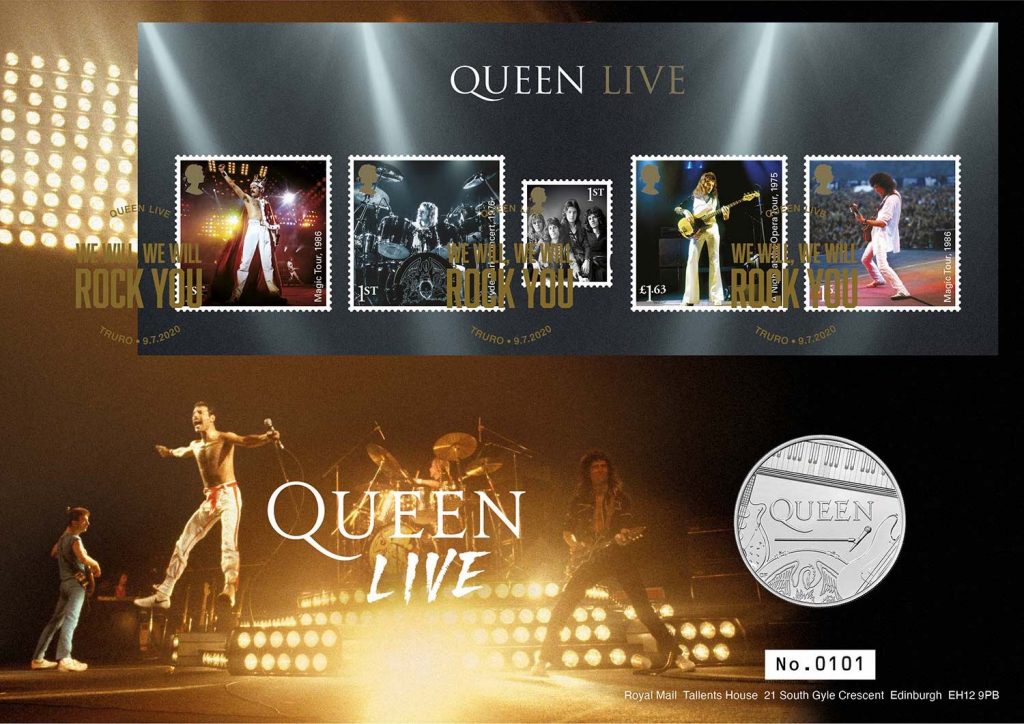
Queen Coin Cover is created in cooperation with the Royal Mint and Royal Mail (Image courtesy of the Royal Mint).
After the meeting, I was thinking about themed coins and wondered if the numismatic community can partner with other collectibles to create a more dynamic show.
For example, why not partner with the New Zealand Mint, Perth Mint, Royal Canadian Mint, and others that produce licensed comic-related coins and the publishers to create a Coin and ComicCon. The coins will be the centerpiece of the event but invite the fans to add a different flair.
There are so many themed coins that the hobby can set up CoinCons that bring in different themes with the coins as the centerpiece. A Sports CoinCon would feature sports on coins, and the grading services can sponsor autograph signings of the labels. Coin dealers could set up next to sports dealers to sell coins. And the coins do not have to be limited to a sports theme. If the dealer can sell investor coins or other themed coins, they can gain from the experience.
Outside of numismatic circles, silver and mixed metal non-circulating legal tender (NCLT) coins are popular. The mixed metals are not limited to ringed coins. Using metals like gold and niobium to highlight features is as popular as colorized coins.
Other possible CoinCon themes include advertising, art, nature, history, science, and almost anything else. An International CoinCon could set up conference rooms with different themes connected by a single hall to allow collectors to go between rooms to experience other collectibles. The CoinCon can invite auctioneers of each theme to hold auctions during the show, especially if their lots have coins to feature. How much fun could it be to have a science and technology theme in a CoinCon and hold an auction with space-related coins and souvenirs?
A CoinCon is not collecting as we knew it yesterday. Today’s collectors want a connection to what they collect. All hobby businesses must understand that this is the present and future of collecting.
Is the 1964 Morgan a fish story?
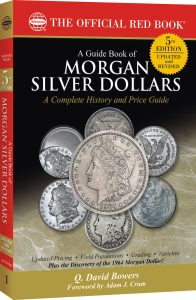 That explosion you might have heard was the collective minds of the numismatic community when it was revealed that a 1964 Morgan Dollar exists, or at least once existed.
That explosion you might have heard was the collective minds of the numismatic community when it was revealed that a 1964 Morgan Dollar exists, or at least once existed.
The press release issued by Whitman Publishing for the new fifth edition of A Guide Book of Morgan Silver Dollars, by Q. David Bowers, that included the following paragraph:
The pricing, text, and certified population data in the fifth edition have been edited and updated. New research covers counterfeit error coins and other topics, including a numismatic bombshell: recent discoveries and photographs revealing the previously unknown 1964 Morgan silver dollar. (emphasis added)
Whitman included an image of the cover as part of its promotion of the book and features this coin. Its grey matte appearance with some flatness on Liberty’s face gives the appearance of a circulated coin.
No other information has been provided.
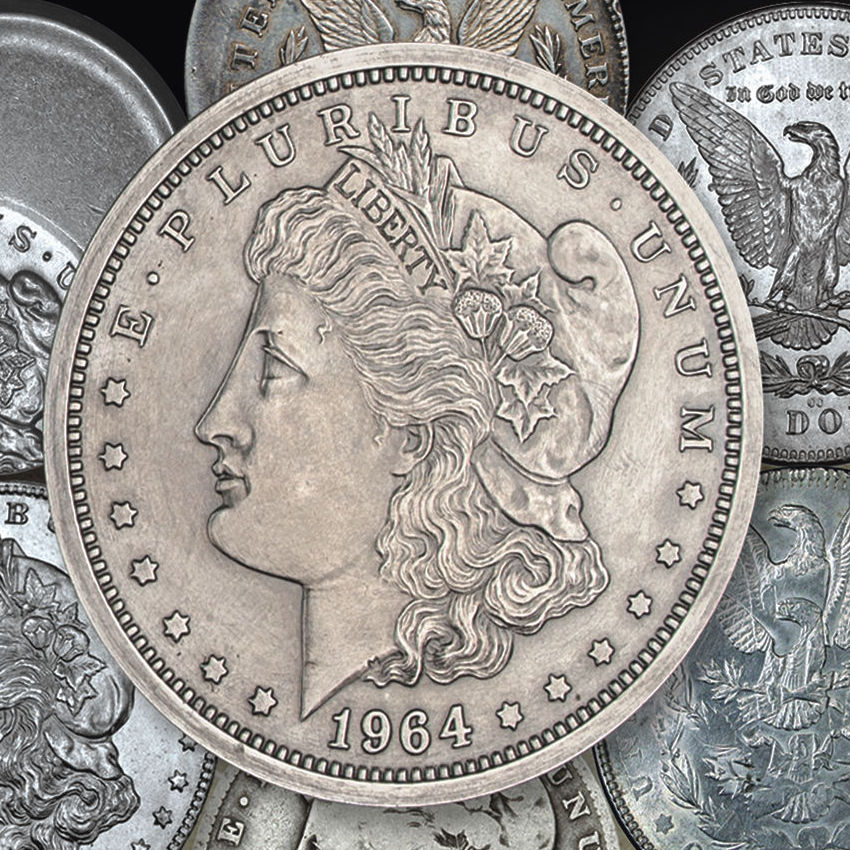
Close-up of the alleged 1964 Morgan Dollar from the cover of A Guide Book to Morgan Silver Dollars 5th Ed. by Q. David Bowers
Without seeing the evidence that is published in the book, the condition of the coin can lead one to question its authenticity. If the coin was a trial or experimental strike that coincides with the striking of the 1964 Peace Dollar, then should the coin appear uncirculated?
What if this coin was part of a rogue like the 1974-D Lincoln cent struck on an aluminum planchet? Did it really exist as a legitimate coin?
We will find out on September 27, 2017 when the book is scheduled to be released to retail outlets (or preorder on Whitman’s website). Until then, we are left to wonder if this is legitimate or a great fish story to sell books?
What I like about you
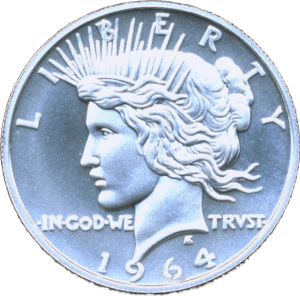 Although this post is not about the the 1980 hit by the Romantics or the sitcom that ran on The WB over 10 years ago, it is about you.
Although this post is not about the the 1980 hit by the Romantics or the sitcom that ran on The WB over 10 years ago, it is about you.
Earlier this year I changed the way I keep statistics for this blog. I had to make this change because the old way of keeping statistics did not tell me what you were reading and because I felt some of those third-parties services did not have a privacy policy or a track record of privacy I was comfortable with. While they could tell me that my posts were being read, unless I turned on some of the more obtrusive tracking option, I could not keep track of older posts that were being discovered, bookmarked, or re-read.
Websites keep these records for various reasons, especially if they are monetizing the views. Since I am not doing this to make money, I want to know what people are interested in reading or searching for. The statistics allow me to see how many people read the blog when I post or come from another link, like the results of a search. These statistics are not perfect because I refuse to add the extra taking items that would tell me if you were reading these posts from an online news aggregator or were sent the information via email. But they are better than other services while not exposing you to potential privacy issues.
Looking at the statistics kept by the new software has been interesting. Let me tell you what I have learned:
- You do read! And I really THANK YOU for being a reader. Based on the statistics 85-percent of the regular readers will read a new post within 3-days of its posting or by Monday if posted on a weekend. I am going to keep posting when I can and not try to target a date or time.
- The most popular day is Wednesday. For some reason, more people read on Wednesday than any other day.
- Although the vast majority of you are from the United States, the Top Five other countries (in descending order) are Germany, Canada, United Kingdom, India, and Spain. Readers have been identified from being from all over the world in many places. There are too many to mention but I find the list fascinating.
- After the Home Page the most popular page is U.S. Coins by Type, a page that provides a list of every legal tender coin produced by the U.S. Mint including planned future issues.
- The most popular post is “No, it wasn’t a double-strike” when quickly looking at my pocket change, I thought the 2013 Mount Rushmore quarter was a double strike. Since I have not beeb paying attention to the striking process, I was not aware of the coins’s design. I thought it was funny but one commenter did not see it that way!
- The second most popular post and the most popular over the last six weeks is “How easy is it to pass counterfeit currency.” The post is about a lesson in using iodine pens versus the security features that Bureau of Engraving and Printing adds to every note it produces. Embedded in the post is a story from the television show Dateline showing the basics but leaving out some critical details.
- Readers come here from Google, Yahoo, and Bing searches. However, after Google, the most people come from Twitter to read the posts. Although it is difficult to identify the search terms that has lead readers to the blog, the top three terms are “us mint news,” “coin blog,” and “2013 mount rushmore quarter error.” The most interesting search term identified had to be “the “a” was key to identifying the mint city. in principle coins of the greeks (1932), h.” I am not sure what it means! If you know, add it as a comment below.
- Finally, you seem to like my pictures as opposed to pictures I embed from other websites. Most of these pictures are the images that I have taken of coins, events, or anything else that may come up. I will try to see if I can find more unique images to write about.
After nearly 11 years and over 1,300 posts, not only am I happy to have you as a reader, but I want to keep going. I appreciate the support over the years and welcome new readers. If there is a topic you would like to see covered, please add it as a comment or send a note.
Just for fun, here are the Romantics and “What I like about you:”
What’s in your pocket?
During the busy week, I will empty my pocket of change and place it on my dresser. When it gets too piled up I will see if there is anything worth a further look before dumping them into a nearby container. After a year, the container is emptied and the proceeds go to charity. But that is after I search for anything interesting.
When I pay by cash, I pay using currency and pocket all of the change so that I can see what I find. Most of the time I am able to pick out items that require further examination when the change is handed to me. Those coins are put in another pocket for later. This week there was little time. Projects have to be completed and it is almost time for football season. No time to waste.
After four days, I did not think there would be much until the single layer started to grow higher. It was time to scoop them into my jar when I started to nice that a nickel did not look right on first glance. It looked worn but it was a nickel. After looking closer the date said 1902. It is a fairly beaten up 1902 Liberty Head “V” Nickel with scratches and what looks like was once graffiti scratched into the reverse. This coin is so bad off that I do not think the third-party grading services would encapsulate it even for a low-grade registry set!
- 1902 Liberty Head V Nickel from a pocket change find
- 1902 Liberty Head V Nickel (reverse) from a pocket change find
This nickel might be the oldest coin I have found in circulation that wasn’t copper.
My next find was interesting because I figured it out before looking closely. Of all the Jefferson nickels, the easiest ones to pick out are the wartime silver nickels. Wartime nickels have a different colored toning than the regular copper-nickel alloy. These coins do not contain any nickel. They are made of .350 silver, .560 copper, and .090 manganese. Without the nickel to keep some semblance of shine the wartime nickels will tone to a distinctive dark silvery gray. If graded G-4 the coin is worth about $1.20 which is not bad considering its silver value is $1.04!
- A 1942-P Jefferson Wartime Nickel from a pocket change find
- Reverse of 1942-P Jefferson Wartime Nickel from a pocket change find
The final find was also easy to identify even before a more careful look. Peaking out from under another coin was the clear sign of an acid date Buffalo nickel. An acid date Buffalo nickel is a coin that had its date restored using a chemical acid, although in this case it looks like the date was worn down after the acid treatment. The distinctive mark left by the chemical can be seen even though the date has worn away again.
- A dateless Buffalo Nickel with acid stain from a pocket change find
- Reverse of dateless Buffalo Nickel from a pocket change find
Other than the nickels I continue to find wheat-back cents. I seem to average one per week. This past week I found four with the oldest being a fairly common 1919 cent that looks like it has been well used and cleaned.
- A 1919 Lincoln Cent from a pocket change find
- A 1919 Lincoln Cent (reverse) from a pocket change find
Next stop for the famed Double Eagles: SCOTUS
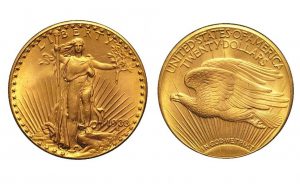
One of the ten 1933 Saint-Gaudens $20 Double Eagle gold coins from the Longbord Hoard confiscated by the U.S. Mint
This is a case that has been ongoing for ten years following the “discovery” of ten 1933 Saint-Gaudens $20 gold Double Eagle coins by Joan Langbord, the daughter of Philadelphia jeweler Israel Switt. Following the auction in 2002 of the only legal Double Eagle for a single coin record of $7,590,020 (since broken), Langbord claims that she found ten 1933 Double Eagles in a safe deposit box where Switt stored the coins.
Langbord reported the find to the Mint to “attempt to reach an amicable resolution of any issues that might be raised.” When Langbord gave the coins to the Mint to be authenticated, the Mint confiscated the coins. Langbord retained Barry H. Berke, the attorney who represented the plaintiffs in the case that resulted in the sale of the King Farouk coin.
-
Reverse of the iconic 1933 Saint Gaudens
$20 Double Eagle gold coin
After adding her sons Roy and David as plaintiffs to protect the property since Joan is elderly, the case is finally heard in July 2011. The court handed down an unanimous decision against the Langbords. The coins are moved to the United States Bullion Depository at Fort Knox, Kentucky.
Langbords appeal the trail to the Third Circuit where a three-judge panel vacated the forfeiture and order the government to return the coins.
The government appeals and asks that the return order be vacated in order to appeal the decision. Rather, the Chief Judge of the Third Circuit will stay the order and ruled that the appeal will be en banc, meaning that the appeal will be heard before the entire bench of judges.
In this round the government did not file in the proper time-frame and the Longboards appealed all rulings. The Third Circuit order the return of the coins but the government appealed the ruling again.
On August 1, 2016, in a 9-3 vote, a full Third Circuit panel of judges ruled that they agreed with the government who argued that forfeiture laws were not applicable because the coins were already U.S. property and could only be surrendered. The majority also ruled against granting a new trial noting that the errors of the 2011 trial were harmless even though a previous three-judge panel ruled differently.
In writing the dissenting opinion, Judge Majorie Rendell said that the majority based its opinion “mainly on its buy-in to the Government’s audacity—the Government’s say—so that it owned the 1933 Double Eagles and had no intention of forfeiting them.” She noted that the Civil Asset Forfeiture Reform Act was designed to prevent the government from forcefully seizing civilian property and that the ruling sets an “incorrect and dangerous precedent.”
A part of the government’s argument that is disturbing is that the they claim the Langbords are “the family of a thief” and should not benefit. Switt was never charged or convicted of a crime. While there is significant circumstantial evidence that Switt was the private seller of the coins and probably worked with the Mint’s cashier, his role has not been legally proven in any of the cases regarding any of the Double Eagle coins. Although this sounds like a legal arm-twist, it is important not only for this case but for any possible case the government can levy against any citizen. It is not right, fair, or legal and a violation of rights.
Berk told Reuters, “The Langbord family fully intends to seek review by the Supreme Court of the important issue of the unbridled power of the government to take and keep a citizen’s property.”
It is likely that the case will be filed to the U.S. Supreme Court for hearing in its next session beginning in October. Hopefully by then a ninth justice will be seated before hearing this case.
PCGS ups the bounty
It started with the 1964-D Peace Dollar, a coin that was struck but never put into circulation and allegedly destroyed. PCGS, along with many others, believes that not every 1964-D Peace dollar was destroyed. The reward was offered in hopes that it would give someone the incentive to bring the coin out of hiding. However, given the current status of the 1933 Saint-Gaudens Double Eagles and the recent confiscation of the 1974-D Aluminum Lincoln cent, $10,000 is not a big enough incentive to risk losing this coin.
Earlier this month, PCGS announced the addition of four coins to their reward list. These four coins are as follows:
- 1873-S Seated Dollar: It was reported that 700 were minted but none have ever been seen. Some think these coins were melted as a result of the Mint Act of February 12, 1873 which ended the series in favor of the Trade Dollar.
- 1894-S Barber Dime: The U.S. Mint reported that only 24 were struck by only 13 have been discovered. One was found in circulation. This leaves 11 chances to claim a reward, if they still exist.
- 1841-O $5 Half Eagle: This was one of those coins where the U.S. Mint reported one thing and did another—or they were partying too much in New Orleans. Although they reported striking 8,350 of these coins in 1841, research shows that 8,300 of the coins were dated 1840. Could the other 50 be out there somewhere?
- 1849 Templeton Reid $25: Only one was ever known and was once part of the U.S. Mint Cabinet Collection. It was stolen in August 1858. Was it melted, as experts believe, or hiding in some unknown treasure trove?
- 1873 Seated Liberty Dollar – NGC PR62 – because there are no pictures of a real 1873-S dollar (Heritage Auctions)
- 1841-C Half Eagle — NGC AU55 because there are no images of a real 1841-O coin (Heritage Auctions)
- Only 13 1894-S Barber Dimes have been accounted for (PCGS)
- 1849 Templeton Reid $25 was stolen from U.S. Mint Cabinet Collection (PCGS)
I wonder if there are any other coins that could be added to this list? Comment below if you have a thought.
- Seated Dollar and Half Eagle images courtesy of Heritage Auctions.
- Barber dime and Templeton Reid images courtesy of PCGS.
